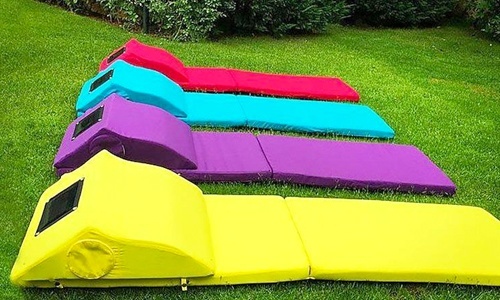

4. Electric Bike That Folds Into a Backpack
At 26 pounds, the A-Bike Electric claims to be the lightest and most compact e-bike in the world. With its tiny wheels and a battery that’s the size of a thermos, the bike is so small it can tuck inside a backpack or under a desk.
With lazy commuters in mind, this updated version to the non-electric A-Bike simply adds a motor in the front wheel and a 24-volt battery. Although it’s small and light, the electric bike is made with aircraft-grade aluminum and high-strength glass-reinforced polymers. The designers also claim that the bike can fold in 10 seconds.
5. Indoor Vegetable Garden
The Grove Ecosystem allows you to grow fresh lettuce, tomatoes, herbs and even raise fish—right from home. Designed and built by engineers from MIT, this cabinet-sized indoor garden has LED lighting to induce photosynthesis so that the plants do not need exposure to the sun, much like the way many indoor vertical farms are designed.
The WiFi-enabled system has its own Grove OS mobile app so you can track growth and tinker with settings such as water levels, temperatures, lighting, microbe levels and more. And yes, this means you don’t have to worry about your system while you’re away from home.
The app also helps you optimize the conditions for whatever you choose to grow. If, for example, you’re growing cherry tomatoes, it recommends the best ways to promote growth, such as proper temperatures and water needs.
6. Yoga Mat Made From 100 Percent Recycled Wetsuits
Yoga mats are often made with chemicals that can be hazardous to human health. That’s where Süga comes in. It’s a company turning non-biodegradable wetsuits, which would otherwise end up in the landfill, into “highly functional instruments of yogic bliss,” founder Brian Shields explained.
Yoga mats made from neoprene wetsuits don’t absorb bacteria, sweat, dust and dirt from yoga studio floors like many other mats. And they don’t contain azodicarbonamide, polyvinyl chloride or other questionable materials like phthalates, lead and cadmium, which have found their way into most standard yoga mats.
The project is currently raising money on Kickstarter. Large-scale production will begin January 2016.

 233k
233k  41k
41k  Subscribe
Subscribe 


